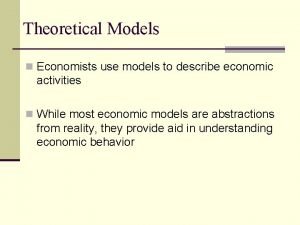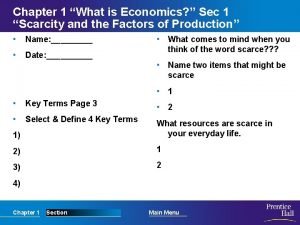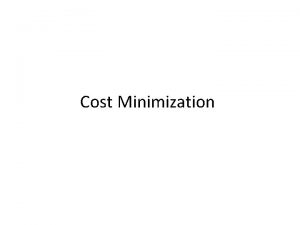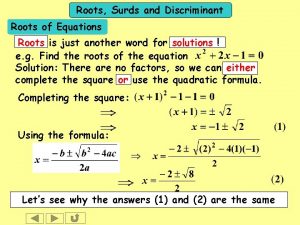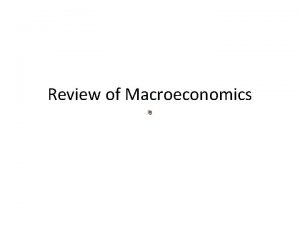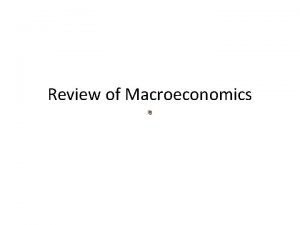Introduction to Macroeconomics Roots of Macroeconomics Most economists







- Slides: 7

Introduction to Macroeconomics

Roots of Macroeconomics • Most economists and policy makers accepted the highs and lows of business cycles as being inevitable, which left them hopeless during the Great Depression in the 1930 s. • JOHN MAYNARD KAYNES, with his book “The General Theory of Employment, Interest and Money, made two-fold argument: - argued that it is possible for high unemployment and underutilized capacity to persist in market economies - argued that government fiscal and monetary policies can affect output and thereby reduce unemployment and shorten economic downturns

Macroeconomic Questions • Why do output and employment sometimes fall and how can unemployment be reduced? • What are the sources of price inflation and how can it be kept under control? • How can a nation increase its rate of economic growth?

Objectives of Macroeconomics OUTPUT • high level and rapid growth of output • to provide goods and services that the population desires • most comprehensive measure of total output in an economy is the gross domestic product / gross national product • potential output is determined by the economy’s productive capacity which depends on inputs available and the economy’s technological efficiency

Objectives of Macroeconomics EMPLOYMENT • high employment and low unemployment • unemployment rate is the percentage of the labor force that is unemployed • When output is falling, the demand for labor falls and the unemployment rate rises

Objectives of Macroeconomics STABLE PRICES • rate of inflation denotes the rate of growth or decline in the price level from one year to the next • consumer price index (CPI) measures the cost of a basket of goods bought by the average urban consumer • price stability is important because a smoothly functioning market system requires that prices accurately and easily convey information about relative scarcities

Tools of Macroeconomics FISCAL POLICY • Denotes the use of taxes and government expenditures MONETARY POLICY • through managing the country’s money, credit and banking system • restricting money supply leads to higher interest rates and reduced investments which cause a decline in GDP and lower inflation



